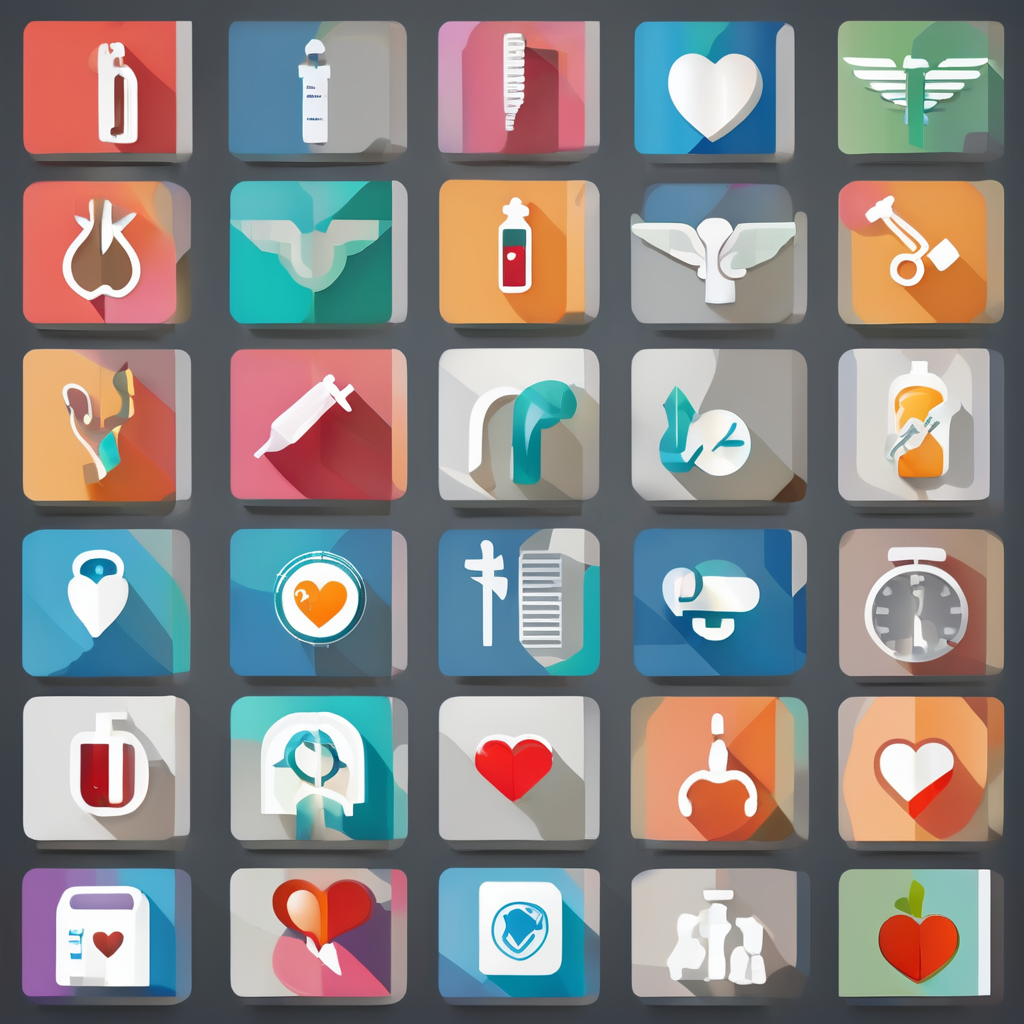If you experience dizziness or balance issues, accurate vestibular testing in London offers precise diagnosis and tailored treatment. Comprehensive assessments like Video-Nystagmography and the Caloric Test evaluate inner ear function using non-invasive methods. Leading clinics provide expert care, quick appointments, and clear results, helping you regain stability confidently and safely. Understanding these tests is key to effective management of conditions like BPPV.
Overview of Vestibular Function Testing Services in London
Accurate vestibular testing plays a critical role in diagnosing dizziness and balance disorders. It enables clinicians to determine whether a patient’s symptoms originate from inner ear problems, neural pathway issues, or other underlying causes. Getting precise results from these assessments supports targeted treatment strategies, reducing symptoms such as vertigo, imbalance, and disorientation.
Also to discover : Effective Approaches for Alleviating PTSD Symptoms in Military Veterans: Strategies That Work
Leading clinics in London offer a wide array of diagnostic options, designed to assess various components of the vestibular system. These include non-invasive procedures that prioritize patient safety and comfort while providing reliable outcomes. Among the most common are Video-Nystagmography (VNG), caloric testing, Vestibular Evoked Myogenic Potentials (VEMP), and vHIT, complemented by positional assessments like the Dix-Hallpike test. They are performed by highly trained audiologists and neurotologists, ensuring high standards of accuracy.
Based on insights from the review summaries, these clinics prioritize thorough assessment methods that are efficient and safe, with minimal discomfort for patients. For example, VNG uses infrared video goggles to record eye movements a painless procedure that helps detect abnormal vestibular responses. Caloric tests stimulate each ear with controlled warm or cool air, provoking nystagmus and balance responses, which are central in diagnosing unilateral vestibular weakness. Tests like VEMP evaluate otolith function by measuring muscle responses to auditory stimuli, while vHIT assesses eye stabilization during rapid head movements.
Also to read : Exploring the Lasting Impact of Consistent Meditation on Brain Plasticity: A Deep Dive into Neuroadaptive Benefits
The importance of positional testing for conditions like BPPV is paramount. The Dix-Hallpike test and the horizontal roll test identify specific eye movements, pinpointing affected semicircular canals. If BPPV is diagnosed, clinicians often perform the Epley Maneuver, which repositions displaced crystals within the inner ear and significantly alleviates vertigo.
Patients are advised on preparation before testing, including ear cleaning, avoiding certain medications, and fasting if necessary. The entire process typically takes between one and three hours, with immediate results shared with patients. Additional imaging, such as MRI or CT scans, may be recommended based on initial findings, further clarifying the diagnosis.
The well-established clinics offer care rooted in high standards and safety, with minimal side effects. Patients often describe the experience as smooth and reassuring, underlining the benefits of expert care in a supportive environment. For those exploring costs or specific procedures, the details are available on the relevant page of Diagnostic Services amd Vestibular Testing.
Types and Procedures of Vestibular Function Tests in London
Video-Nystagmography (VNG) and Caloric Testing
Video-Nystagmography (VNG) and caloric testing are core components of inner ear function tests London clinics perform daily. VNG testing involves patients wearing video goggles with infrared sensors to track eye movements as they follow visual targets. This computerised vestibular test methodology allows for real-time assessment of nystagmus, highlighting disturbances in the vestibular system. During VNG, any abnormalities in involuntary eye movement suggest inner ear balance disorders and guide specialists in dizziness evaluation.
Caloric testing delivers targeted stimulation to each ear canal using warm and cool air. The alternating temperatures cause temporary shifts in the fluid within the semicircular canals, leading to characteristic dizziness and observable nystagmus. Each caloric test run lasts approximately five minutes and is crucial to detecting unilateral or bilateral vestibular hypofunction. Patients typically experience short-lived sensations of spinning or imbalance, a normal part of the balance disorder testing process. This method remains a trusted diagnostic vestibular test that specialists rely on for differentiating between central and peripheral causes of dizziness.
Vestibular Evoked Myogenic Potentials (VEMP) and Video Head Impulse Test (vHIT)
Within advanced vestibular assessment, VEMP testing evaluates the otolith organs’ responsiveness by using brief clicking sounds and surface electrodes gently placed on the skin. VEMP objectively measures muscle responses from the neck and eyes, helping to identify inner ear balance disorders that patients frequently present with. This test is brief, comfortable, and complements other audiovestibular tests that practitioners employ for a comprehensive analysis.
The Video Head Impulse Test (vHIT) is another hallmark in the range of inner ear function tests London offers. During vHIT, clinicians deliver small but fast head turns while computerised goggles precisely track eye movements. Any lag or abnormality in the vestibulo-ocular reflex can pinpoint semicircular canal dysfunction essential in distinguishing vestibular neuritis or BPPV from other causes. This test enhances diagnostic vestibular testing accuracy and can shape intervention plans in conjunction with dizziness evaluation and balance disorder testing consultations.
Positional Tests and BPPV Diagnosis
A focused approach to BPPV diagnosis involves positional testing such as the Dix-Hallpike and horizontal roll tests. With Dix-Hallpike, the patient is gently guided from a sitting to a supine position with the head turned to one side, monitoring for controlled onset of vertigo and nystagmus—signs pointing to displaced otoliths in posterior semicircular canals. The horizontal roll test, by rotating the head in varying horizontal planes, helps localize horizontal canal BPPV.
These non-invasive vestibular tests are foundational for vertigo testing services that clinics develop. Once positional vertigo is confirmed through these procedures, tailored treatment such as the Epley maneuver is provided. This technique, performed immediately by a dizziness specialist, repositions dislodged crystals, bringing rapid relief. The sequence of positional tests, coupled with patient symptom analysis, ensures that diagnosis of BPPV is not missed, providing a bridge to effective vestibular rehabilitation programs curated by leading balance clinic teams.
Through this combination of computerised vestibular tests patients receive, including VNG, caloric testing, VEMP, vHIT, and positional maneuvers, specialized vestibular testing services yield clear answers. Detailed analysis during each stage leads to targeted vestibular therapy and robust inner ear disorder diagnosis, fostering an environment where recovery strategies can be built on the foundation of precision and expert care.
Preparation, Duration, and Post-Test Follow-up
Pre-Test Preparation Guidelines
A successful vestibular assessment experience depends on adhering closely to preparation instructions, enhancing the accuracy of balance disorder testing procedures. Before any inner ear function tests, patients are strongly encouraged to have ear wax removal completed, as obstructions can affect test quality. It is essential to avoid eye makeup, since it may interfere with video-goggle tracking used within VNG testing and other computerised vestibular tests.
Alcohol and sleep aids should be strictly avoided for at least 24 hours before your appointment. These substances can dampen responses during vestibular screening, making results less reliable. Light meals are preferable before testing; heavy food can cause discomfort during the balance disorder testing process. Anti-dizziness and antihistamine medications should be discontinued 48 hours prior but patients with diabetes, cardiac conditions, or mental health concerns must consult their physician before altering their regimen. Audiovestibular test providers recommend continuing life-sustaining medication, with extra care for diabetics: bring a snack and monitor glucose as needed.
Test Duration and Results Interpretation
The full suite of inner ear balance assessment appointments typically occupies one to two hours. Some specialized vestibular assessment clinics may extend clinical balance tests up to three hours, especially if complex vestibular disorders are suspected or multiple tests are indicated. During this period, patients will undergo a combination of non-invasive vestibular tests, including VNG testing, caloric testing, and positional testing for vertigo.
Immediate feedback is an integral part of dizziness evaluation. Trained clinicians interpret your results on the day of assessment, guiding you through findings from inner ear disorder diagnosis. A clear, jargon-free explanation ensures patients understand their clinical balance assessment, and a comprehensive written vestibular function report is provided for onward referral or further investigation. Should imaging or advanced diagnostics be necessary, referrals are arranged efficiently correctly framing next steps for balance problem diagnosis.
Patient Experience and Safety Considerations
Every vestibular function clinic prioritizes patient comfort and safety. Throughout comprehensive vestibular testing, clinicians explain each step to minimize anxiety and maximize cooperation. It is common to experience minor side effects such as brief dizziness, headache, or mild nausea following equilibrium testing, especially after procedures like caloric testing. These effects rarely persist beyond the visit and are addressed with reassurance and rest.
Clinics offering specialized vestibular testing operate within strict professional, regulatory, and safety standards, ensuring low risk of complications for all audiovestibular tests performed. Patients are often encouraged to arrive with a companion, given the temporary fatigue or unsteadiness that can follow some inner ear balance tests. Emphasis on clear information and patient support underpins the experience across balance clinic providers, supporting individuals from initial appointment to follow-up, and when appropriate through vestibular rehabilitation programs.
Leading London Clinics Offering Vestibular Testing and Treatment
Harley Street Audiovestibular Clinic
This specialist centre excels in vestibular system examination and diagnostic vestibular testing, catering to those seeking clarity for balance concerns. The clinic relies on a suite of non-invasive vestibular tests that residents often request, including VNG, VEMP, vHIT, and bi-thermal caloric testing. For patients presenting with suspected BPPV or complex vestibular symptoms, positional testing for vertigo such as Dix-Hallpike and horizontal roll assessments forms an essential part of their protocol.
The clinical team provides immediate post-test feedback and detailed management plans, supporting patients in understanding results and pursuing next steps like vestibular rehabilitation or specialist vestibular care. Treatment strategies ranging from targeted vestibular therapy to balance rehabilitation and pharmacological advice address both acute and chronic conditions. Harley Street Audiovestibular Clinic is recognized for rapid appointment availability, direct consultant access, and a patient-centered approach, placing emphasis on safety and regulatory compliance.
The Balance Clinic at The London Independent Hospital
Balance disorder testing and vertigo testing services are at the core of The Balance Clinic’s offering, where advanced diagnostics are blended with thorough follow-up and holistic management. The clinic structures appointments to encompass a primary assessment covering key inner ear function tests often necessary for symptoms like vertigo, veering, or unexplained dizziness and, if indicated, an advanced assessment incorporating MRI or expanded audiovestibular tests.
Consultants and audiologists specialize in tailored vestibular assessment, using validated tools such as the vHIT and caloric stimulation. Comprehensive vestibular screening here is matched with patient education about causes of imbalance including peripheral and central vestibular system examination and individualized recovery plans such as vestibular rehabilitation therapy. Flexible payment and insurance acceptance support accessibility, while timely telephone follow-ups and written reports create clarity for both patients and referring physicians.
Pindrop Hearing Limited Facilities
With locations across the city, Pindrop Hearing provides wide-reaching access to ENG testing and advanced vestibular diagnostics. Their offering covers both audiovestibular tests and patient support resources, making it a go-to option for ongoing dizziness and balance management. Each centre prioritizes safe, non-invasive vestibular tests that clients increasingly seek, such as computerised vestibular tests for various inner ear balance disorders that can present.
The clinical approach balances thorough inner ear disorder diagnosis with practical tools; patients are given educational materials and aftercare support, and benefit from efficient booking systems. Pindrop’s clinicians are skilled in the nuances of vestibular system examination and can guide individuals through both balance assessment services and long-term management including rehabilitation for inner ear disorders. Finance options and a focus on comfort and convenience appeal to those managing complex vestibular or auditory conditions.
These leading clinics demonstrate expertise in specialist dizziness clinics, emphasizing evidence-based care, up-to-date techniques like vestibular evoked myogenic potentials, and seamless pathways from diagnostic vestibular testing to rehabilitation. Robust options for BPPV diagnosis, vestibular migraine testing, and holistic dizziness evaluation are all available, reflecting a commitment to resolving inner ear balance problems patients face.
Choosing the Right Clinic: Factors and Patient Considerations
Expertise and Credentials of Clinicians
Patients managing vestibular system disorders should prioritise clinics where audiologists and ENT specialists hold advanced credentials and substantial experience. Look for clinics with clinicians recognised by national regulatory bodies or with NHS tenure, which signals a deep understanding of both common and rare vestibular conditions. Long-standing expertise is particularly valuable for nuanced issues like inner ear function tests or comprehensive vestibular assessment protocols. These clinicians frequently participate in ongoing professional training and maintain affiliations with respected audiology boards, ensuring best practice in balance disorder testing and up-to-date diagnostic techniques.
Range of Tests and Equipment Used
The choice of a balance clinic should rest on its range of diagnostic technologies. An optimal setting employs advanced tools for computerised vestibular tests including Video-Nystagmography (VNG), caloric testing, Vestibular Evoked Myogenic Potentials (VEMP), and positional tests allowing tailored selection based on patient symptoms. This breadth is crucial for accurate inner ear balance assessment, especially in cases needing multi-faceted analysis like vestibular migraine testing or ENG testing. Integration of findings across multiple tests results in a cohesive diagnosis and better-targeted intervention, whether for BPPV diagnosis or broader dizziness evaluation. Modern equipment also ensures safety and comfort, which directly impacts patient trust and the quality of clinical outcomes.
Patient Experience and Support Services
Support, clear dialogue, and streamlined processes are vital for those undergoing vestibular therapy or consultations with dizziness and balance specialists. Clinics with robust support systems provide step-by-step explanations before and after each diagnostic vestibular testing procedure, alleviating anxiety and ensuring full understanding of one’s condition. Rapid appointment scheduling (often within a fortnight) and immediate result discussions reflect the efficiency seen in top London clinics. Post-assessment, continuous guidance is readily available for vestibular rehabilitation or balance problem diagnosis pathways. Comprehensive written reports, coordinated follow-up, and empathetic care are hallmarks of clinics specializing in inner ear disorder diagnosis and related clinical balance tests. When the patient journey is clear and communication is proactive, the experience is more positive and recovery more likely, underscoring the importance of patient-centered care for all forms of vestibular system disorders.
Additional Resources and Support for Balance and Dizziness Patients in London
Patient Education on Balance Disorders
Most specialist dizziness clinics provide extensive patient guides that clarify symptoms and recommended steps for everyday care. Educational materials detail balance disorder testing techniques and outline the available non-invasive vestibular tests such as VNG, caloric stimulation, and VEMP. Clear explanations help demystify the process of inner ear function tests for patients facing uncertainty about vestibular assessment. Typical resources offer focused advice for managing chronic dizziness, highlight how simple activities like regular stretching reduce fall risk, and introduce routines for strengthening gait and core stability.
For those adapting daily life, practical tips matter. Easy-to-follow suggestions cover safe home modifications, nutrition guidance for maintaining hydration, and strategies for coping with sudden dizziness. Information on vestibular rehabilitation is highlighted, with step-by-step summaries empowering patients to self-monitor and track improvement. Many clinics also supply videos and brochures explaining posture control, walking aids, and inner ear balance assessment outcomes, fostering understanding of what to expect from diagnostic vestibular testing.
When to Seek Medical Advice
Timely medical intervention can make a significant difference. Symptoms like rapid-onset vertigo, new hearing loss, double vision, or sudden imbalance warrant prompt balance problem diagnosis at a balance clinic. These warning signs signal potential risk of complex conditions, underlining the importance of dizziness evaluation by a qualified dizziness specialist. Clinics recommend not delaying evaluation, especially if falls have occurred or symptoms escalate in frequency or severity.
Recognizing when brief symptoms differ from sustained disturbances is critical sustained disorientation or difficulty standing safely suggest an urgent need for specialist vestibular care. Seeking early evaluation ideally through immediate vestibular system examination or vestibular therapy improves recovery odds and helps tailor effective rehabilitation. Specialist teams streamline referrals and clarify next steps for patients through hotlines, online booking, or GP referral systems, ensuring rapid access to audiovestibular tests and supporting families through the diagnostic journey.
Support Networks and Further Reading
Balance clinic teams and specialized vestibular testing services regularly point patients to relevant support networks. National organizations, including Age UK, are trusted sources for those dealing with age-related inner ear balance disorders or frequent falls. These groups provide day-to-day guidance, connect patients with physiotherapists, and share community class information targeting postural strength.
Libraries of online articles and printable guides break down complex concepts like ENG testing and posturography assessment in accessible language. Many clinics curate a list of reputable reading materials and activity booklets so learning continues outside the clinical setting. Multidisciplinary coordination between vestibular function clinic staff, physiotherapists, occupational therapists, and clinical psychologists ensures continuity of care and access to holistic rehabilitation for long-term conditions. This collaborative approach underpins effective management of chronic dizziness and sustained independence for London patients, embedding practical expertise into everyday living.











